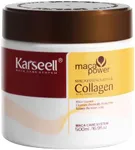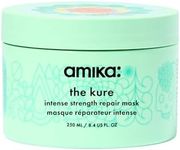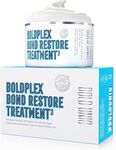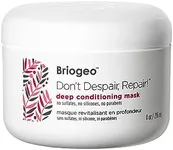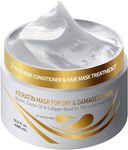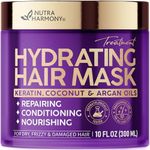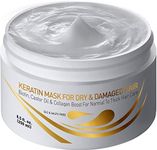Buying Guide for the Best Hair Repair Masks
Choosing the right hair repair mask can make a significant difference in the health and appearance of your hair. Hair repair masks are designed to nourish, strengthen, and restore damaged hair. To find the best fit for you, it's important to understand the key specifications and how they align with your hair type and needs. Here are some essential factors to consider when selecting a hair repair mask.Hair TypeHair type is a crucial factor when choosing a hair repair mask because different hair types have different needs. Hair types can be broadly categorized into straight, wavy, curly, and coily. Straight hair may require lightweight masks to avoid weighing it down, while curly and coily hair often benefit from richer, more moisturizing formulas. Understanding your hair type helps you select a mask that will provide the right level of hydration and repair without causing unwanted side effects.
IngredientsThe ingredients in a hair repair mask determine its effectiveness and suitability for your hair. Look for masks with nourishing ingredients like keratin, argan oil, coconut oil, shea butter, and proteins, which help to repair and strengthen damaged hair. Avoid masks with harsh chemicals, sulfates, and parabens, as these can further damage your hair. If you have specific concerns, such as color-treated hair, look for masks with ingredients that protect and enhance your hair color.
Hydration LevelHydration is essential for repairing damaged hair, but the level of hydration needed can vary. Masks with high hydration levels are ideal for dry, brittle, or chemically treated hair, as they help to restore moisture and elasticity. For normal or oily hair, a mask with moderate hydration is sufficient to avoid making the hair greasy. Assess your hair's moisture needs and choose a mask that provides the appropriate level of hydration to restore its health.
Protein ContentProtein is vital for strengthening and repairing damaged hair, as it helps to rebuild the hair's structure. Masks with high protein content are beneficial for hair that is weak, breaking, or has been subjected to heat styling or chemical treatments. However, too much protein can make hair stiff and brittle, so it's important to balance protein treatments with moisturizing masks. If your hair is not severely damaged, opt for a mask with a balanced protein-moisture ratio.
Application TimeThe time required to apply and leave a hair repair mask on your hair can vary. Some masks need to be left on for just a few minutes, while others require 20-30 minutes or even overnight for maximum effectiveness. Consider your lifestyle and how much time you can realistically dedicate to hair care. If you have a busy schedule, a quick-acting mask may be more suitable, whereas if you can spare more time, a longer treatment might provide better results.
Frequency of UseThe recommended frequency of use for hair repair masks can differ based on the product and your hair's condition. Some masks are designed for weekly use, while others can be used more frequently. Overusing a mask, especially those with high protein content, can lead to buildup and potential damage. Assess your hair's needs and follow the product's guidelines to determine the appropriate frequency of use. If your hair is severely damaged, you may need to use the mask more often initially and then reduce the frequency as your hair improves.


